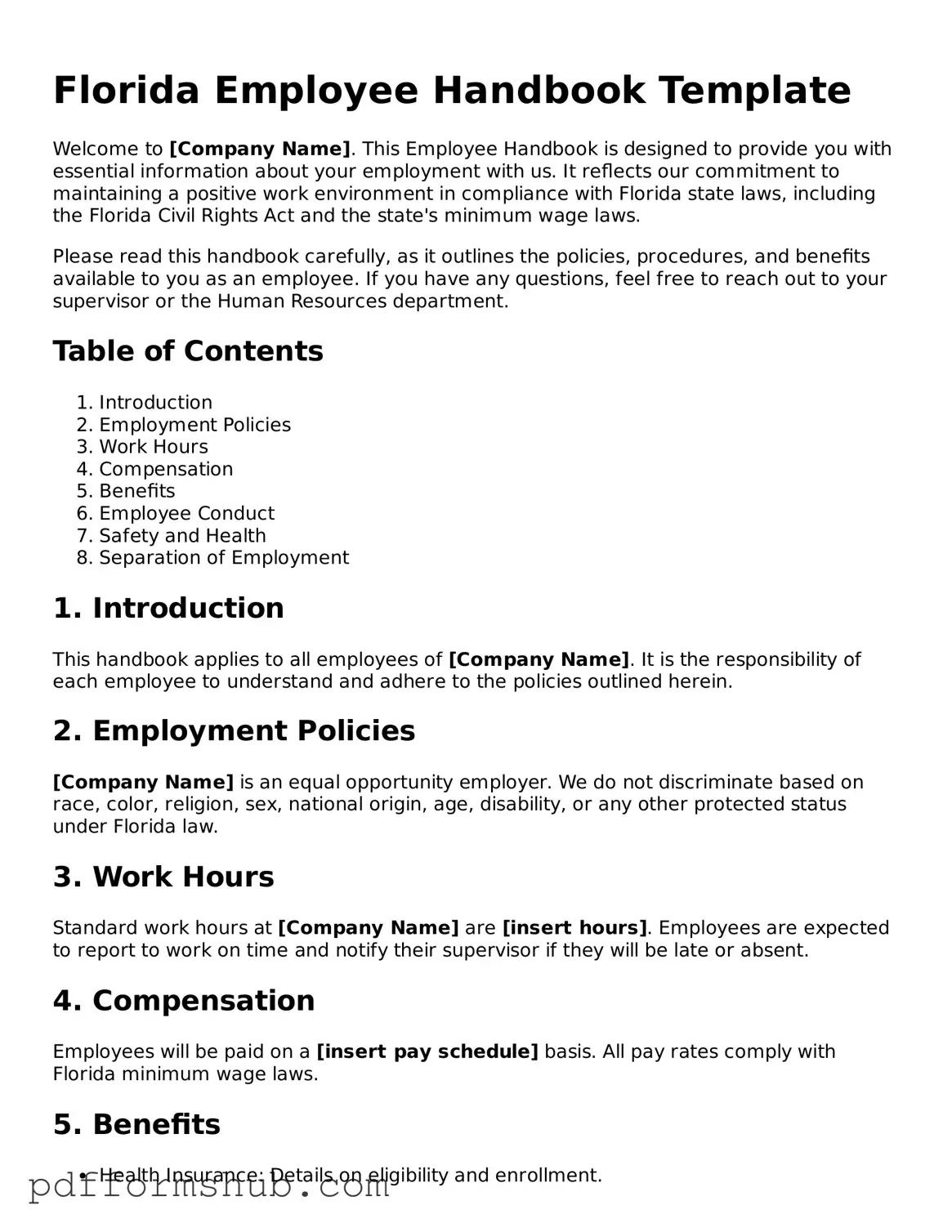Attorney-Verified Employee Handbook Form for Florida State
The Florida Employee Handbook form is a document designed to outline the policies, procedures, and expectations within a workplace. This form serves as a vital resource for both employers and employees, ensuring clarity and understanding of workplace norms. To get started on creating or updating your handbook, please fill out the form by clicking the button below.
Customize Form
